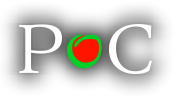|
|
| Invited Talk, Friday, 10:15 – 10:45 |
|
|
|
| Physical limits of cell migration
Katarina Wolf
Microscopical Imaging of the Cell,
Department of Cell Biology, NCMLS, Radboud University Nijmegen Medical
Centre, 6500 HB Nijmegen, The Netherlands |
|
|
| Contact:
| Website |
|
|
Cells moving through extracellular matrix (ECM) are confronted with collagen
fibrils and bundles which serve as substrate for adhesion, traction and
guidance but also form a physical barrier against the advancing cell body.
Mechanistically, migrating cells employ two concurrent strategies to overcome
physical tissue constraints, such as (i) localized pericellular proteolysis
of ECM components leading to opened ECM gaps and realigned trails, and
(ii) deformation of cell body and nucleus to navigate through narrow ECM
pores. We here define the mechanisms and physical limits of protease-dependent
and -independent migration, respectively, using different cell types, together
with degradable three-dimensional (3D) fibrillar lattices of different
density reconstituted from cross-linked or non-cross-linked type I collagen,
and non-degradable polycarbonate transwell filters of different pore size.
The data show relative (5 to 3 µm pore diameter) and absolute limits
(3 to 1 µm pore diameter) of cell migration in 3D tissue and identify
physical thresholds below which the deformation of the nucleus is insufficient
to maintain migration. In context, the physical dimensions of ECM gaps
and pores, the availability of surface proteases, as well as the nuclear
shape and deformability control cell morphology and efficiency in cell
migration. |
|



